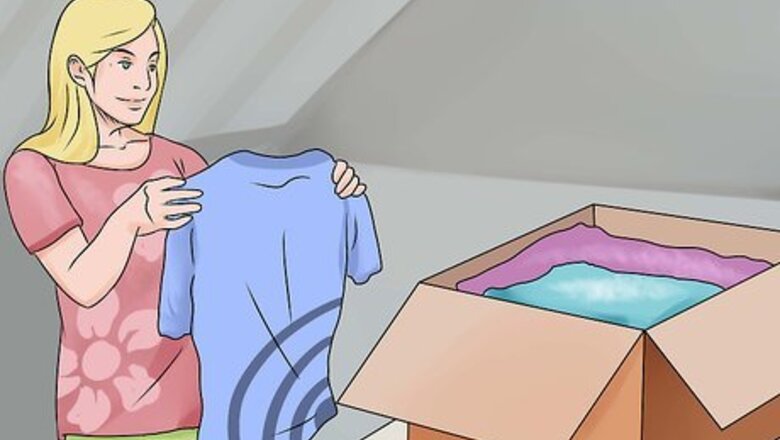
views
Collecting Inventory
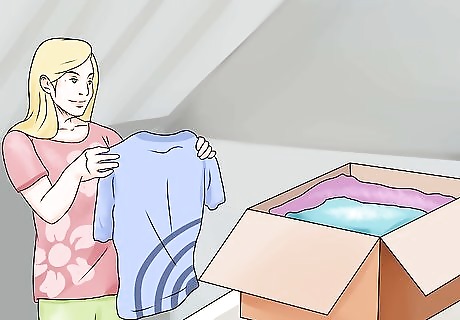
Gather items for sale. Go through those boxes in the attic, shed, closet or garage and select items you can sell. Then walk from room to room in your home, identifying things you no longer need. It can be hard to part with things, even if you never use them. If you haven't used something for over a year, it's a good sign you won't miss it. Sell anything you don't want or use anymore like clothes that don't fit you, dishes that you never use, outdated game systems, shoes, crafts that you've made, picture frames, and other knickknacks. People will buy just about anything. While there are certain hot sellers like children’s toys, old tools, books, antiques, and simple kitchen items, don’t be afraid to try to sell things that you can’t imagine anyone buying. The worst-case scenario is that it doesn't sell and you'll have to dispose of it. Make sure merchandise is fairly clean and not broken, especially to prevent an item from injuring someone. However, you can try and put out broken stuff that is safe to handle. You might be surprised. Many people will buy broken hardware items, kinked hoses, old doors, and other seemingly undesirable items. You may want to consider putting these out for free.
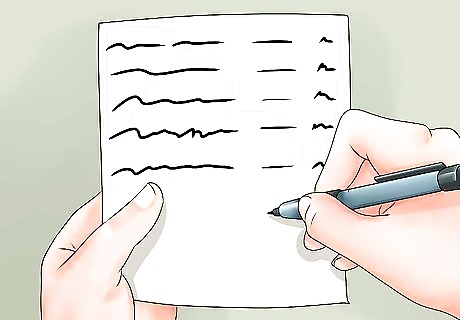
Take inventory. Record each item you plan to see on a sheet of paper as you identify it for sale. Many people skip this step, but a master list of your wares can make your sale run much more smoothly. Include the price of each you item in your inventory. Price tags have a strange way of getting lost at garage sales, and it’s hard to come up with a fair price on the spot, especially if you've got other people asking you questions or you're helping out someone else with their garage sale. The more items you're trying to sell, the more important it is to tabulate your wares. A list can help you keep track of your items to look out for thieves who might try to steal.
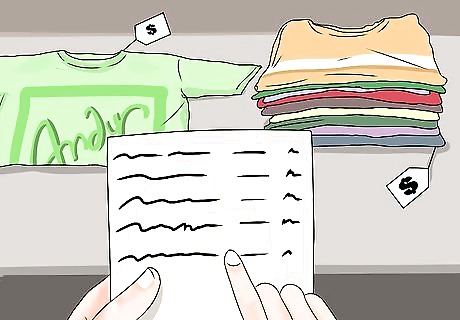
Price your goods. Review your completed inventory sheet and assign a reasonable price to each item. If you really just want to get rid of an old knickknack, price it cheaply. For items that are more valuable, a general rule is to price it at a quarter of what you paid for it initially. You can go higher on certain items, such as those that are nearly new, collectibles, or valuable antiques. Remember that the main purpose of a yard sale is to get rid of your old stuff and not necessarily to make a huge profit. Garage sale shoppers are looking for bargains. If you don’t want to have to pack everything back into your house at the end of the day, then you've got to give people the low prices they’re looking for. Some people won't pay more than 10% of the retail price when they go to garage sales. Price your merchandise to sell, and you’ll make money. If you aren't set on a definite price for an item, use the phrase "Make an Offer" or write it on the price tag. Bear in mind that some customers may try to low-ball you with ludicrously low prices. You can also say, for instance, "$40 or best offer" if you want to suggest a certain base price. Prices need not be set in stone. You may want to change the price of a given item depending on the crowd and how much they need the item.
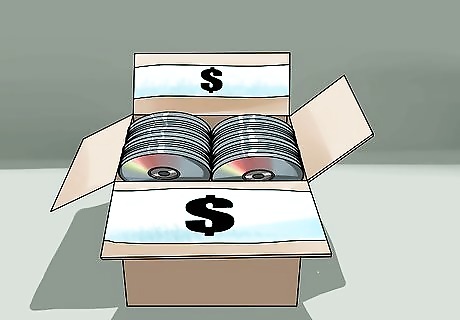
Label your items with price tags. Attach a clearly written price label to each item. This will protect you from a constant barrage of price inquiries and clear up confusion regarding the price of an item. Using brightly coloured labels will make it easier for your customers to find the price and will save you time on the day of the sale. You can purchase adhesive labels, or you can use a “sticker gun.” If you don't have sticker labels, you can also use small pieces of masking tape, or make your own stickers. If you have a lot of similar items that are all the same price like books, CDs, cassettes or VHS tapes, put them all in one box and label the box with the price for each. For example, a box of books might have the label, "$0.50 per book". Customers will sift through the box if they're interested, and some collectors may offer you a bulk price for the entire box.
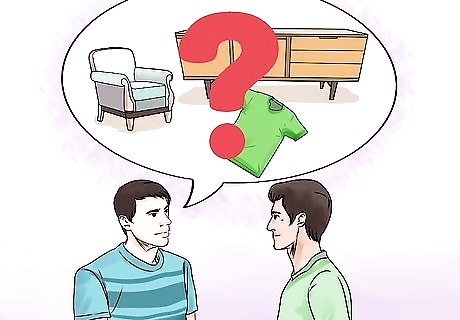
Make your sale as big as feasible. Garage sale-goers tend to prefer larger sales. If there looks like there is not a lot to choose from, people may not even get out of the car. As well, attracting serious garage sale-goers will attract people casually passing by who are wondering why there are so many people at a sale. Ask your friends, family, and neighbours to contribute their items. You may know people who want to sell a few of their own items, but who are not prepared to set up a garage sale. If they do want to sell their items, avoid a logistical hassle later on by making sure your friends, family, or neighbours have done inventory on their own items. They should tell you exactly what they're giving to you to sell, as well as what it's worth. Haggling on friends' items should only be done with their permission. If a customer isn't willing to compromise on their low-ball offer, say, "It's not mine. I'm selling this for a friend, so I have to stick with their price for you and the other buyers".
Prep and Promotion
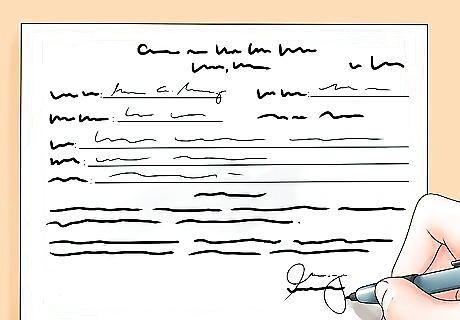
Obtain a permit if it's required in your area. Check with your city or homeowner's association to find out if you need a permit to have a garage sale. Many cities place restrictions on garage sales, dictating where you can place advertisement signs when you can sell, and how often you can hold a sale. These serve to distinguish sellers who are conducting retail within a residential zone and from full-time commercial operations. It's better to take the time to do your research, and to pay the small fee for a permit than to risk losing more money in fines.

Consider organizing a multi-family or community garage sale. This means having many families and neighbors holding garage sales at the same time as you. Each family or house will attract their own buyers who might visit other homes and their sales that are happening at the same time. Multi-family garage sales are often more successful than single family garage sales. If you mix items in a multi-family sale, color-code your price tags or clearly mark the items as yours so that your cashier will know who should get the money for each item. Let the other families know or the cashier which items are available for haggling and which are not, especially if all your items are mixed together.
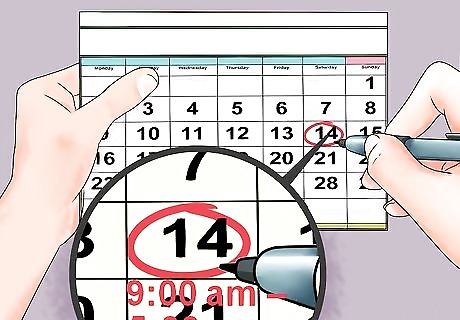
Set a date and time for your sale. A two-day garage sale is usually enough to sell out most of your stock, and summer weekends—especially Fridays and Saturdays—are the best times. Choose a day when a lot of potential buyers will be out and about. Most yard sales start early in the morning as early as 8 a.m. and can end late in the evening. Plan to set aside an entire day. For example, hold a sale from 9 a.m. until 6 p.m. Check the local weather forecast, and try to avoid rain, snow, or extra chilly days. Warm days usually bring people out of their homes more. Be careful about scheduling your sale during special events and holidays, as many potential customers will have something more urgent to do than drive around picking through garage sales. Some streets and neighborhoods will have "Annual Garage/Yard Sale" days. These are your opportune moments. On these days, everyone is out looking for yard sales in your area. Notices about these days may appear in the mail. Avoid holding a sale when there is road construction occurring along the main route to your sale location. Construction may keep away potential customers who are either avoiding the traffic or in a bad mood from the traffic.

Choose a location for your sale. If you’re just having a single-family sale, your location is pretty much set: hold the sale in front of your house in your yard, your driveway, or an open garage. If you’re having a multifamily or charity sale, be sure to pick a spot that is large enough for everybody’s wares and choose a location that is easy to find and to get to. It should preferably be at a location nearby like a park or parking lot.

Advertise your sale. You don't need to advertise ahead of time, but it may dramatically increase your customer traffic. Your local newspaper may offer a deal on ads for garage sales. If your sale is happening on Friday, you should have an ad in the paper by Wednesday or just on Thursday. You also want to make sure to get your ad into the paper before the deadline, which could be several days in advance before you plan to show the ad in the paper Advertise in free weekly community shopping papers and on community bulletin boards in grocery stores and laundromats. Spread the word through your local neighborhood grapevine. Don’t overlook the internet. There are many sites that allow you to place advertisements for free. Post to Facebook, Twitter, Instagram, and other social media platforms. Invite your network to peruse your wares.
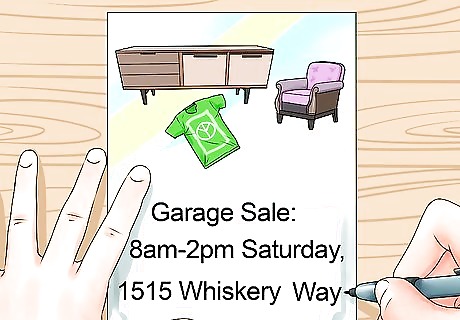
Make signs a few days before the sale. Give the date and time of the sale, the location and, if you have room, list some items for sale. The signs can be as simple as "Garage Sale: 8 a.m. - 2 p.m on Saturday at 1515 Whiskery Way", or "Yard Sale Saturday: 1515 Whiskery Way" with an arrow pointing down the street toward your house. Try to find a balance of information that's useful, fun, and easy to read from a moving vehicle. Make sure that the phrase "Garage Sale" or "Yard Sale" is prominent. Use plain, bold colors and simple lettering when conveying your garage sale's information. Use a sturdy material for your garage sale signs, like a couple of layers of poster board or corrugated cardboard, so that the wind won't bend it.
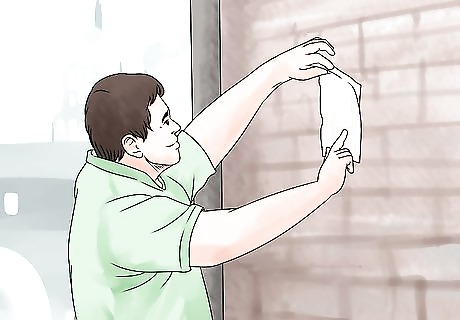
Post the signs around your neighborhood. Hang your signs a few days before the sale in places where they will be noticed by many passersbys. You can tape signs to telephone poles, lamp posts, trees, and stop-sign poles. Put a sign at the entrance to your neighbourhood, or in front of your house. If you live near a major road, hang the signs on telephone poles or street signs at an intersection on that road. Intersections with stop signs or traffic signals are particularly good places to put a poster. In case, check your municipality's or homeowners association's rules regarding signs.
Setup
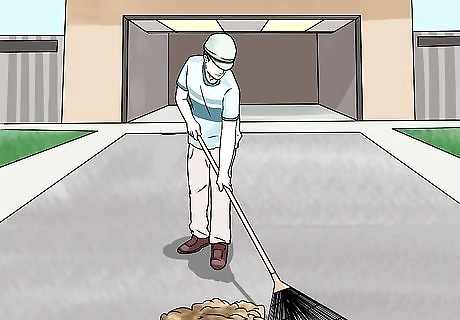
Tidy up your yard and/or garage. Garage sale customers are more likely to buy (and to buy at higher prices) if it looks like the merchandise came from a good home with owners that care for their things. They’re also more likely to feel comfortable stopping and browsing if your sale space is attractive and clean. Presentation is key. Mow the lawn, rake the leaves, and open up space to display the items you're selling. Make sure that customers have plenty of parking space. Consider moving any cars that are usually parked in front of your house. You might need to move them to another street or ask a neighbour if you can park your car in front of their house or in their driveway.
Make sure that you have enough table space. You can use tables and bookshelves from your house to display your items, Or you can rent folding tables if you don't have enough. While customers do see and buy items that are on the ground, it's important to display small items on tables. This protects them from foot traffic and allows people to easily inspect them. If you're using furniture from your home to display your wares, make sure that this not-for-sale furniture isn't mistaken for something that's up for grabs. Consider draping a sheet or a tablecloth over tables to hide the furniture itself but preserve the display space.
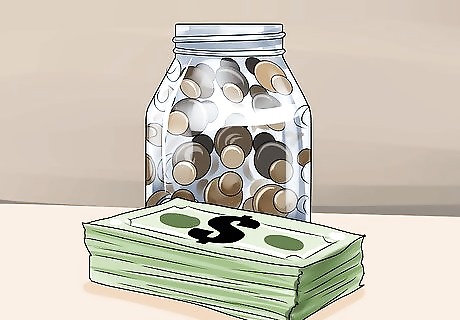
Get plenty of change. Customers may not have exact change on hand, and your ability to make change could be the difference between a sale and a walk away. Unless you've got a lot of change at home, chances are that you’ll need to visit the bank the day before the sale. Pick up a few rolls of coins and be sure to keep plenty of small bills on hand. You’re going to be making change for a lot of customers, so consider using a fanny pack or an apron to organize your money. Many fanny packs have two pockets: you can keep the bills in the large compartment, and the coins in the smaller compartment. Keep large bills in the house until they're needed. You don't have to drop them or lose large amounts of money in case your money is stolen. If you own a smartphone or a tablet, consider setting up a credit card swipe. This is a professional touch, and it may entice customers to spend more than the hard cash they have on hand. This is especially handy for "big ticket items" like used furniture, bikes, instruments, and rare antiques.
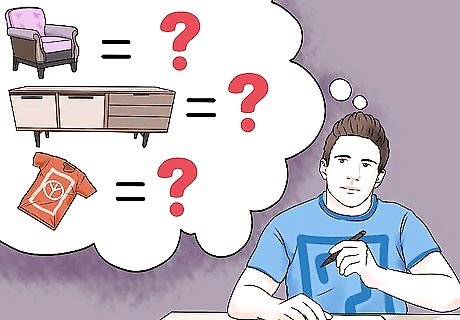
Set up on the morning of the sale. Get up early so that you’ll have plenty of time to arrange your vending area. The morning will mainly be used to set up your display items, and to move furniture and cars. Consider enlisting a few early-rising friends or family members to help you set everything up more quickly. Make a game plan the night before. You should know where your tables will go, where you're putting various goods, how much you're charging for each item, and where you're going to put the money. If your sale is popular, everything will start to happen rather quickly, so be prepared. Seasoned garage sale customers often arrive before the posted times to get a first crack at the premium merchandise, and these customers come ready to buy. Make sure you have everything ready an hour or two before your advertised start time. Don't set up the night before, even if you live in a safe neighbourhood. You never know who walks the streets at night. Furthermore, your wares could grow damp from dew or morning mist, making them harder to sell. To avoid people coming before you're ready to open, wait to put up signs around the neighbourhood until you have everything out and you're ready to sell. Put the signs closest to your house up last. The early birds (usually re-sellers) can be distracting, even pushy, while you are busy setting up.
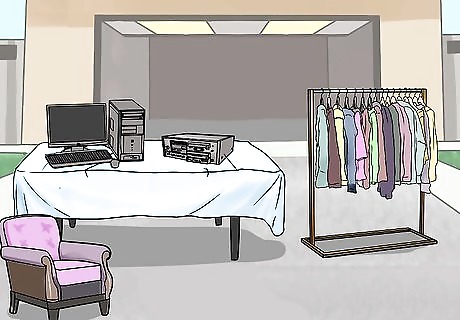
Keep your display visually attractive. Many potential customers will drive by before they stop, and you want your sale to look intriguing and well-organized so that they stop. Take things out of the boxes in which you gathered them, so that people driving by will see your goods instead of a bunch of cardboard boxes. Place premium items (nearly-new merchandise, antiques, large tools, etc.) close to the street to attract interest. Arrange your tables so items are neatly displayed with enough room between items to allow people to comfortably inspect them. Instead of folding clothes on tables, hang them from a clothesline strung from trees, a clothing rack, or from your garage ceiling near the door. Hanging clothes are easier to look through, and you won’t have to worry about refolding them on the table. Helium balloons are an inexpensive way to draw attention to your sale. Hang them on your tables or at the end of your street.
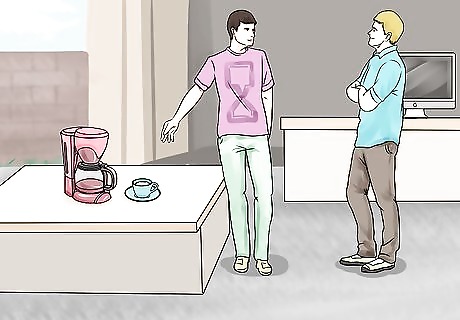
Consider offering refreshments. Add more interest to your sale by offering craft items, home baked goods, or beverages. Having coffee or donuts available encourages some to stick around and buy more. People tend to attract people. People will often pass up a garage sale if no one is there.
Running the Sale

Be an active seller. Running a garage sale is a lot like working at a retail establishment, so bring out the salesperson within you. Greet your customers with a friendly smile as they arrive. Ask customers if there is anything you can help them with. Then let them browse if they say no. You want people to feel comfortable at your sale and not like they are being watched or judged. Offer package deals (if a person buys a blender, for example, why shouldn’t they buy those margarita glasses as well?), and reward big buyers with bulk discounts. Don’t just hope that your goods sell themselves.
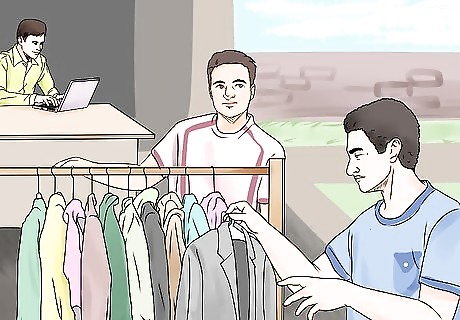
Have extra help on hand. Always have several people at the sale for the sake of convenience and security. You can ask your family members or friends to help out and repay them with a small fee or treat them to a meal afterward. Bathroom breaks are made easier with extra help. When you need one, you can keep the sale running smoothly. Never leave the sale unattended for more than a few moments at a time and avoid leaving the sale under the watch of small children.

Keep your items tidy throughout the sale. As your sale progresses, things will unavoidably get disheveled, disorganized, and possibly even broken. If you want to sell as much as possible, you should try to keep things looking nice. Straighten items as you walk by them and while you speak to customers. Move items around as you sell them, putting forward new and premium items in the front.

Negotiate with hagglers. Even though your prices are clearly marked, some people will try to haggle. Play along; haggling can be a fun experience, and you’ll likely make a lot more sales if you’re willing to reward these bargain hunters. Don’t be afraid to decline an offer that considers all offers. After all, you’re trying to get rid of this stuff. Be sure not to drop your prices too early in the day. If you've successfully organized your garage sale, you should bring in plenty of customers that are willing to pay the full price. If you're having a multi-family sale, haggling on friends' items should only be done with their permission. If a customer isn't willing to compromise on their low-ball offer, say, "It's not mine. I'm selling this for a friend, so I have to stick with their price for you and the other buyers".

Offer last-minute deals. If you still have items left over during the final scheduled hours of your sale, then go ahead and slash prices. Some deals you can offer: Buy-one-get-one deals. Bulk discounts. Two for the price of one. Half priced items after a certain time.
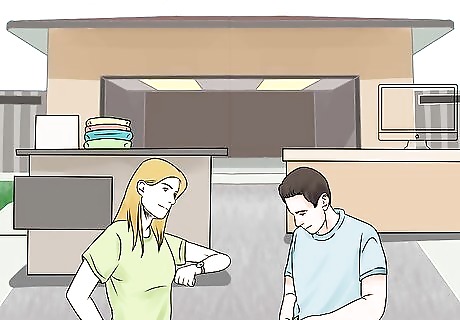
Stay open until closing time to catch latecomers. You never know when someone's going to come across your sale, even if traffic has died down. This is especially relevant if you've set a specific window for your garage sale, such as 9 am to 3 pm, and even more so if you've posted the times for the sale online or in the paper. You may continue to get occasional customers all the way up to the end of the sale. If you wait until after closing time before you start to pack up, you may find that some stragglers will come by. Sometimes people will come by to offer you a set dollar amount for the entire load!

Give away what you don't sell. Don't just throw perfectly-good items into the landfill—try to find someone who needs the things that you don't. You can post ads online or posters around your neighborhood advertising the things you will be giving away. You can tell your friends, family, and neighbors about the items you will be giving away, asking them if any of them are in need. Check with local charities and thrift stores. Some will pick up items that you don't sell and put them to good use.

Take down your signs after the sale. Try to take down the signs as soon as possible to help keep your neighborhood and community clean. Nobody likes to see old, faded, and sagging signs taped up to poles. Ask a friend or family member to take down signs right after closing time so you can continue to sell or clean up. If your address is written on a sign, and you leave it up in your neighborhood for weeks after the sale, everyone will know where you live. Furthermore, you might continue to get prospective customers showing up at random times.
Security Tips
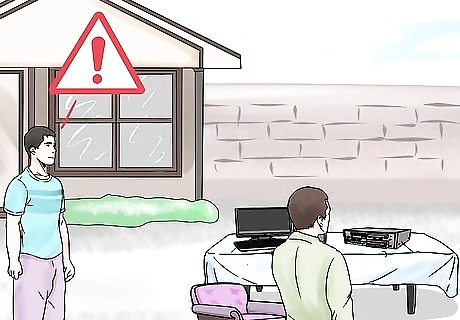
Keep an eye on your customers. A garage sale brings all kinds of people, including shoplifters. Keep your wares in plain sight and avoid leaving the sale unattended for more than a few moments at a time. Consider asking friends or neighbors to help you run the sale so that there's always someone watching over the customers. The more eyes you have on your side, the more likely you'll be to catch shoplifters in the act. As long as people know you’re watching, you probably won’t run into much trouble, but if somebody does steal a small item, it’s probably not worth confronting them. Use your best judgment. If the thief is a neighborhood kid, you might consider confronting him and telling his parents. If the thief is a surly, dangerous-looking stranger, you may want to let them take the item without a struggle. If you suspect that someone has stolen something valuable, confront them tactfully and call the police if necessary, but do not attempt to detain them.
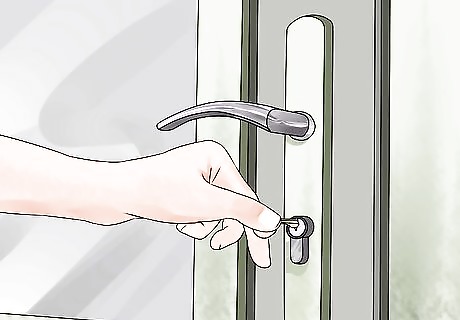
Lock up your house to deter opportunistic burglars. During your sale, lock all doors into the house. This includes back doors, front doors, and side doors. As well, windows and close screen doors. There may be a thief, or thieves working together, looking for a five-finger-discount on the valuables inside your home that you aren't selling. Crowds bring distraction. It's important to place yourself and your items in a place where you can easily see everything.
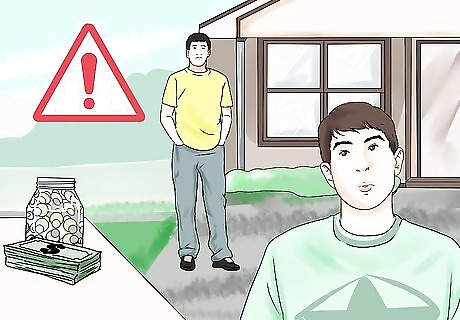
Watch your cash. Anybody can come up to it and steal the money you've made, so make sure that someone is attending it at all times. Or keep it close to you in a closed bag or fanny pack. Only keep a reasonable amount of money in your cash box or with you at a time. That way, if somebody does steal it, they’re not getting too much. Consider buying a counterfeit pen—a marker that can detect counterfeit bills. If someone offers you a hundred-dollar bill, you'll want to be able to tell whether it's real.

Have a bathroom plan. The larger your garage sale, the longer people will stay; the longer people stay, the more likely it is that they'll need to use the restroom. Some customers may ask to use your home restroom. You are under no obligation to let anyone into your house, even to use the restroom, but you might consider making exceptions for small children or the elderly. If someone really needs to go to the bathroom, direct them to the nearest public building.


















Comments
0 comment